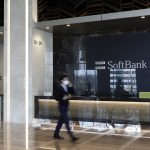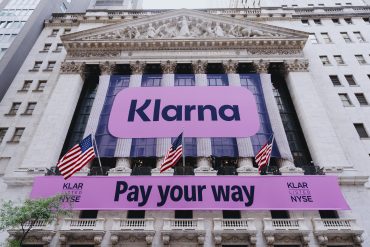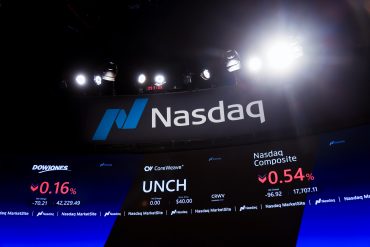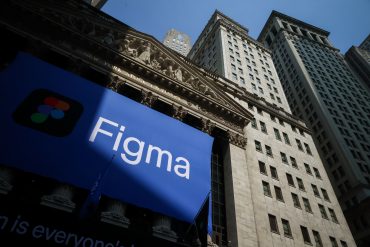
- AI
- IPO
- Stock Market
Figma Files for $1.5 Billion NYSE IPO with 91% Margins
5 minute read

Design software platform Figma reveals exceptional profitability and aggressive AI investments ahead of NYSE debut
Key Takeaways
- $821 million revenue with 91% gross margin demonstrates Figma’s exceptional profitability among SaaS companies, ranking in the top 5% with a net profit margin of 19.7%
- CEO Dylan Field retains 75% voting control through dual-class share structure in planned $1.5 billion IPO on NYSE under symbol “FIGM”
- 356% surge in R&D spending reflects massive AI investment strategy, with AI mentioned over 150 times in IPO prospectus as company positions for future growth
Introduction
Figma transforms from acquisition target to public market contender with an IPO filing that reveals remarkable financial performance and ambitious AI strategy. The design software company plans to list on the New York Stock Exchange under the symbol “FIGM,” seeking to raise approximately $1.5 billion at a $12.5 billion valuation.
The filing exposes a rare combination of high growth and profitability in today’s tech landscape. Figma generated $821 million in rolling 12-month revenue with a 91% gross margin, positioning itself among the elite tier of software-as-a-service companies.
Key Developments
Figma’s financial trajectory shows consistent acceleration across key metrics. The company reported $749 million in revenue for 2024, representing 48% year-over-year growth. First quarter 2025 revenue reached $228.2 million, maintaining a 46% growth pace.
The company’s path to profitability includes notable volatility. Figma swung to a $732 million loss in 2023 due to a major employee stock compensation event, issuing 10.5 million stock options at $8.50 per share. However, the company returned to profitability by Q4 2024, posting $44.9 million in net income for Q1 2025.
Geographic expansion drives significant revenue diversification. Over half of Figma’s revenue now originates from outside the United States, while 67% of revenue growth comes from non-design roles, expanding the company’s addressable market beyond its traditional design user base.
Market Impact
Figma’s IPO represents one of the largest tech listings planned for 2025, potentially matching records set by other major offerings. The company’s Rule of 40 score of 64% significantly exceeds industry benchmarks, combining growth rate and profit margin in a metric closely watched by SaaS investors.
Enterprise adoption metrics underscore market penetration strength. Figma serves 78% of Fortune 2000 companies, achieved within just eight years of operation. The company maintains 1,031 customers contributing over $100,000 in annual recurring revenue and more than 11,000 customers generating over $10,000 each.
The failed $20 billion Adobe acquisition, blocked by regulators, now appears strategically beneficial. The Information reports that Figma used Adobe’s $1 billion termination fee to fuel innovation and maintain independence in the competitive design software market.
Strategic Insights
Figma’s dual-class share structure ensures founder control while accessing public capital markets. CEO Dylan Field retains approximately 75% of voting rights pre-IPO, with co-founder Evan Wallace transferring full voting control of his shares to Field. This structure enables long-term strategic decision-making without short-term market pressures.
Artificial intelligence investment represents the company’s primary growth bet. R&D spending surged 356% in 2024, driven by increased headcount, technical infrastructure, and AI-related costs. Tools like Figma Make and Figma Sites expand beyond traditional design workflows into code generation and web development.
The company faces competitive pressures from Adobe’s Firefly AI and emerging startups like Lovable. However, Figma’s sub-5% enterprise churn rate and $1.07 billion cash reserves provide operational stability during market expansion.
Expert Opinions and Data
Renaissance Capital estimates Figma could raise up to $1.5 billion in its public offering, reflecting strong institutional investor demand. The IPO timing aligns with broader tech market recovery, as investors seek profitable growth stories amid economic uncertainty.
Industry analysts view Figma’s combination of high growth, profitability, and founder control as particularly attractive. The company’s net profit margin of 19.7% contrasts sharply with many unprofitable tech IPO candidates, while maintaining strong growth momentum.
CEO Dylan Field emphasizes reinvesting IPO proceeds into research and development plus mergers and acquisitions, even accepting short-term efficiency impacts. This strategy reflects confidence in AI’s transformative potential for the software creation industry.
Major venture capital backers include Index, Greylock, Kleiner Perkins, and Sequoia, though share sale participation by executives and investors remains unclear. Field previously participated in a 2024 tender offer, cashing out $20 million worth of shares.
Conclusion
Figma’s IPO filing presents a compelling case study in profitable SaaS growth combined with aggressive AI investment. The company’s ability to maintain high margins while scaling globally positions it favorably among public market investors seeking sustainable technology businesses.
The founder-controlled structure and substantial AI spending signal Figma’s commitment to long-term market leadership over short-term optimization. With strong enterprise adoption and international expansion momentum, Figma enters public markets as a formidable competitor to established design software incumbents.








